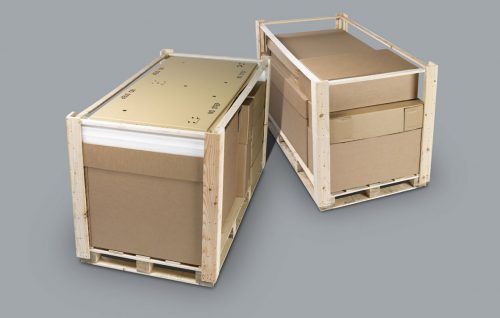Manufacturer of communications equipment
Customer
Manufacturer of communications equipment for military, avionics and security industries.
Application
A new high value product required a packaging solution which would protect the highly finished equipment from transit damage, whilst reducing freight costs and improving efficiency in the packing, unpacking and assembly operations. The packaging also had to accommodate any add-on equipment, be stackable and meet crucial size and footprint requirements. Bubble-wrapping had proved unsatisfactory, being labour-intensive and making components difficult to identify.
Solution
Working with the customer’s product design team, Macfarlane used SolidWorks 3D CAD technology to create a twin-pallet solution without requiring actual parts to work from. This CAD to CAD process speeds development work and avoids the need for samples.
The design itself features a timber 4-way entry pallet base, with corner posts and framework from heat treated softwood, die cut inserts made of heavy duty corrugated board and polyethylene foam cushioning. It provides full protection for the component parts when transported by road and air, and can be stacked whilst in storage.
All components are identified by bar codes, and a detailed set of instructions is provided so that the goods can be unloaded in the correct sequence for rapid assembly.
Results
- SolidWorks design delivered fast, effective solution to meet product first shipment dates.
- Pack configuration and instructions make on-site unloading and assembly fast and simple.
- Lightweight design minimises freight and storage costs.
- Transit protection for all components’ fragility levels.
- Pack materials readily recyclable.
A good example of the value of collaborative working, Macfarlane’s CAD technology translated a complex requirement into effective protective packaging for this advanced communication system. More than just a transit pack, the design offers distinct operational advantages. Component parts are easily identified, and a logical unloading sequence allows rapid assembly and deployment at the destination.







